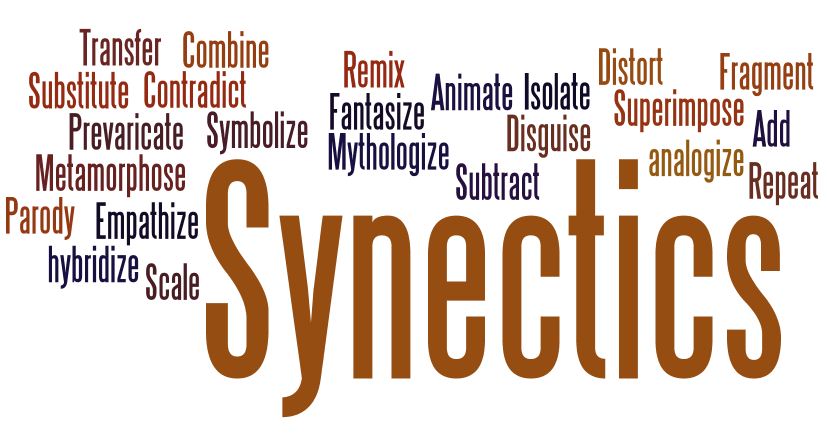
Synectics
Compare a paradox in your problem to an analogy.

Synectics is a process for discovering links that unite seemingly disconnected elements. The essences of the synectics theory is that all things, regardless of their dissimilarity, can be linked together either in a physical, psychological, or symbolic way.
To perform Synectics:
Step 1: Begin by first identifying the inherent paradox in your problem. If your problem is “How do I prevent my skiff from being stolen?” then the paradox could be, “I lock up my skiff but the thieves seem free to steal it.”
Step 2: The next step is to generate Analogies that parallel the paradox. As an example, the “scarlet snake” serves as a good analogy because the scarlet snake looks like something (a coral snake) that it is not.
Step 3: Then define the unique activity behind the analogy. This means getting to the essence of the analogy. In-other-words, what is the function operating behind the analogy? In our example, the scarlet snake is non-venomous, but looks poisonous to its predators.
Step 4: In the final step, consider the unique activity (in step 3) in terms of your problem, then generates equivalents. For example, maybe you can make your skiff look toxic to thieves by putting a big decal on it that's similar to a law enforcement agency.

Sources:
Synectics: The Development of Creative Capacity, William J.J. Gordon, New York: Harper and Row, 1961.
The Thinker's Toolkit, by Morgan D. Jones, New York: Three Rivers Press, 1995.
MindTools web site at www.mindtools.com
